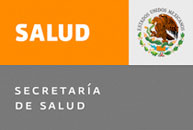SCORPIONISM
Intoxication or envenomations by SCORPIONS sting is a serious public health problem in Mexico, requiring total support from medical workers to provide accurate and timely information about scorpionism in order to establish and promote epidemiological control actions. The information provided by local health authorities enables the recompilation of complete statistics relevant to the age, sex and locality of the envenomations accident, and providing accurate knowledge of morbidity and mortality at the municipality level. Coupled with knowledge about the distribution of toxic species, such statistics lead to preventive measures such as scorpion population control (pesticide spraying), and ensuring adequate supplies of antivenin in high-risk zones.
The Mexican Government has developed an Official NORM: NOM-033-SSA2-2002 for the surveillance, prevention and control of intoxication due to scorpion sting.
The importance to Public Health represented by intoxication due to scorpion sting lies on its magnitude and transcendence, taking into account the presence of areas which meet the biogeographical, epidemiological, demographic and socioeconomic conditions, as well as the rural nature and poor condition of the affected populations, which favor its presence.
Morbidity presents and endemic pattern in 70% of the national territory, where highly toxic scorpion species are present, and therefore intoxication by scorpion sting (IPPA in Spanish) is considered a medical emergency.
This NORM establishes the formal procedures and functions in surveillance, prevention and control of IPPA based on current scientific and technological principles, and emphasizes the risk factors and corrective actions that should be improved and established as prevention and control measures.
